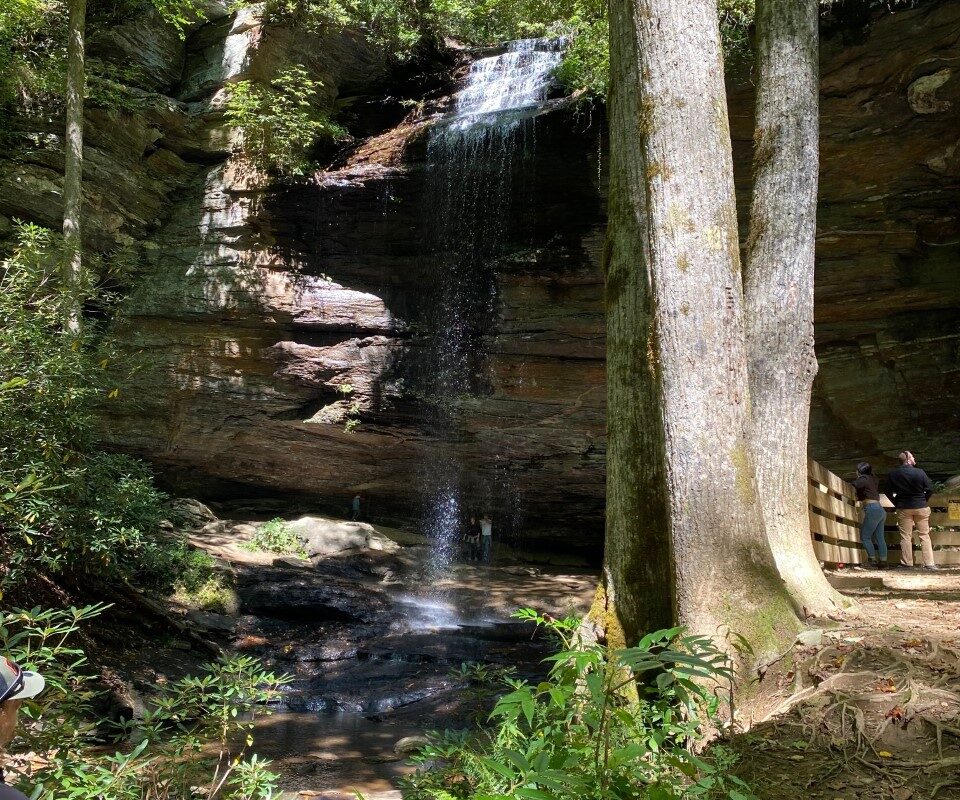The visions of our ancestors assures our tomorrows
Take a hike, ford a stream, climb a mountain, follow a forest trail, delight in scenic waterfall, and thrill over panoramic views of magnificent mountains. Each day visitors to Pisgah National Forest in North Carolina do each of these activities. Yet, most don’t realize how this beautiful forest came to be. We fill backpacks with snacks, grab bottles of water, put on hiking shoes, get a map and head off to see the wonders of nature from scenic mountain vistas to the amazing waterfalls in Pisgah National Forest. Thankfully over 120 years ago decisions and actions of our ancestors created and salvaged the magnificent beauty of the Pisgah National Forest that we take for granted today.
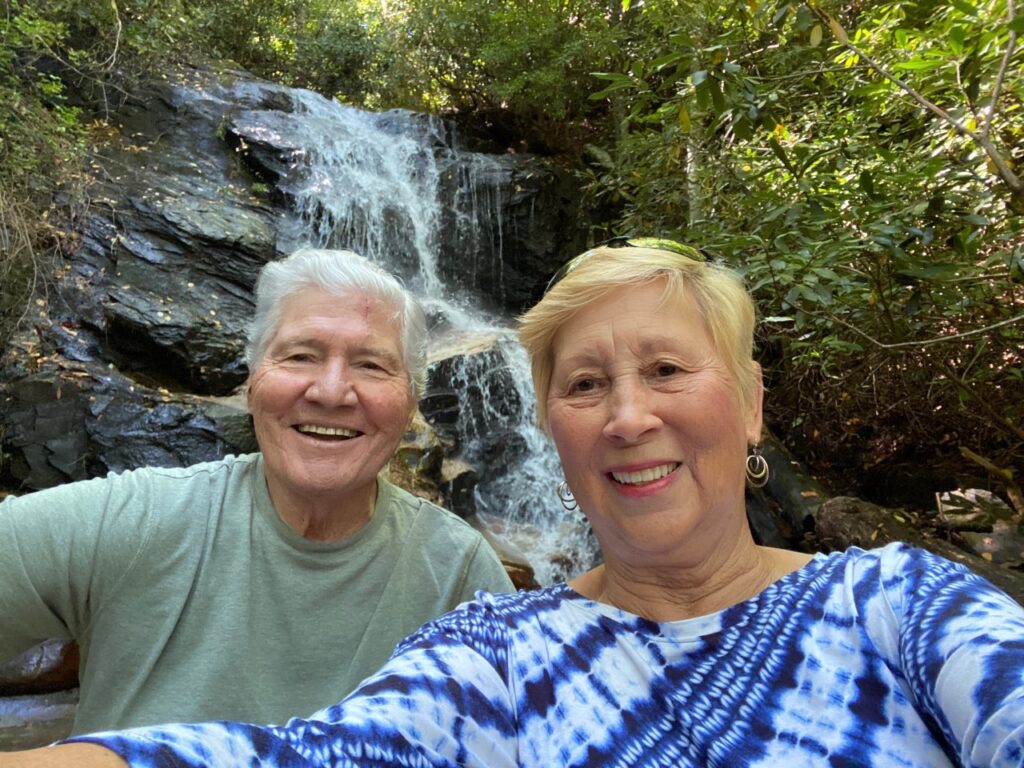
On the outskirts of Brevard, North Carolina is Pisgah National Forest. With 250 waterfalls, the area is called the “Land of Waterfalls.” Stopping at the Pisgah Ranger Station/Visitor Center, we get up-to-date information and a handout of scenic waterfalls that are less than a 2-mile hike. Due to the damage caused by Tropical Storm Fred in August, several hiking trails and waterfalls are closed. A comment of the Ranger’s catches my attention. She explains that Pisgah National Forest is a “second-growth forest with trees just over 100 years old.” Thus the Forest is more susceptible to damage from storms. She recommends visiting the Cradle of Forestry to learn the history of Pisgah National Forest.
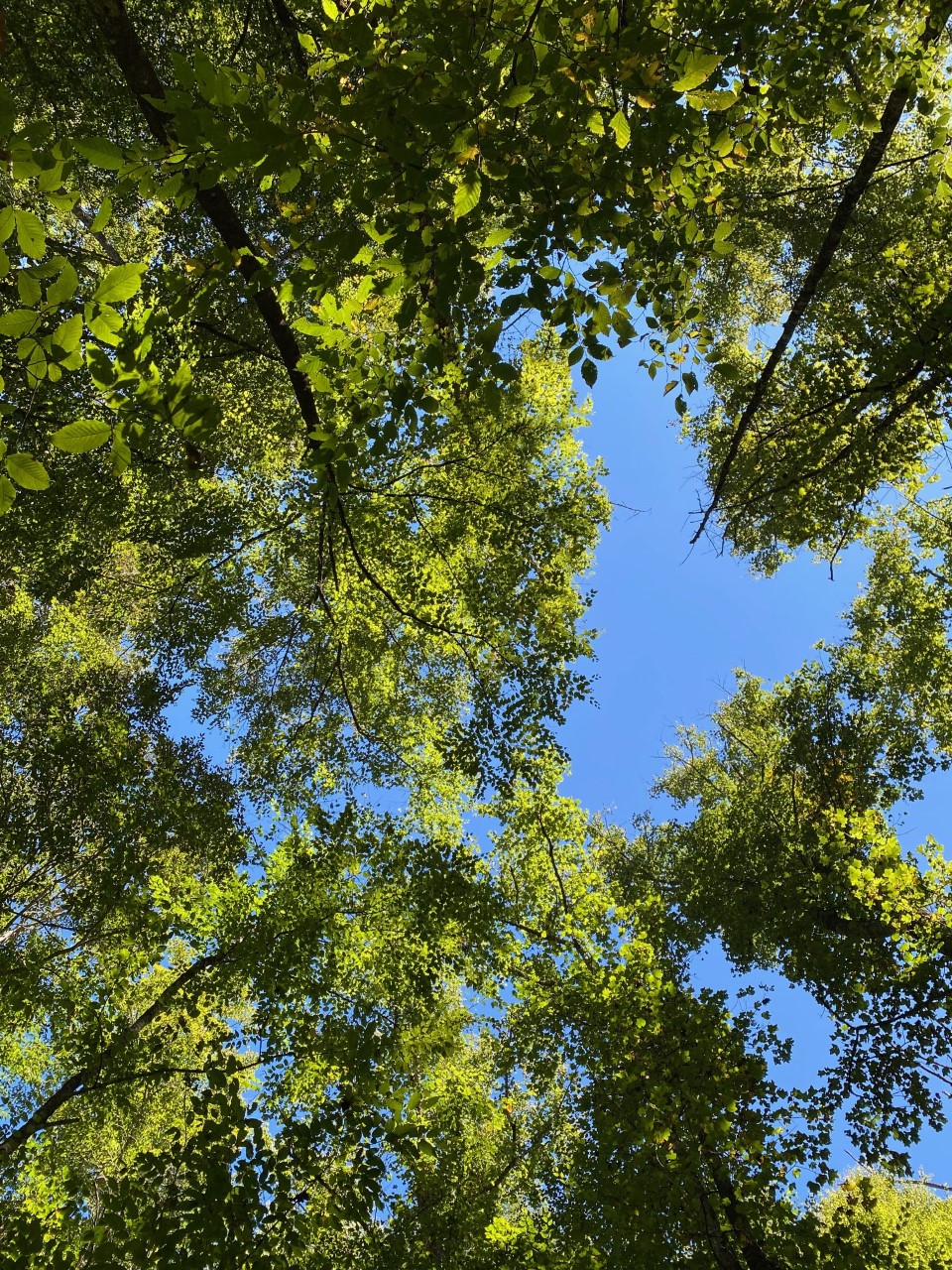
THE CRADLE OF FORESTRY
The Vanderbilt Vision
Who was George Vanderbilt? He built the Biltmore! He did more than build a BIG house in the mountains of North Carolina. He acquired land on which to construct the Biltmore, eventually owning 125,000 acres. That’s 195 square miles! Anywhere Vanderbilt looked from the Biltmore was his land. Sadly, the majority of the property was in very poor condition. While Vanderbilt inherited wealth he also had interests in horticulture, agriscience, animal breeding, and silviculture.
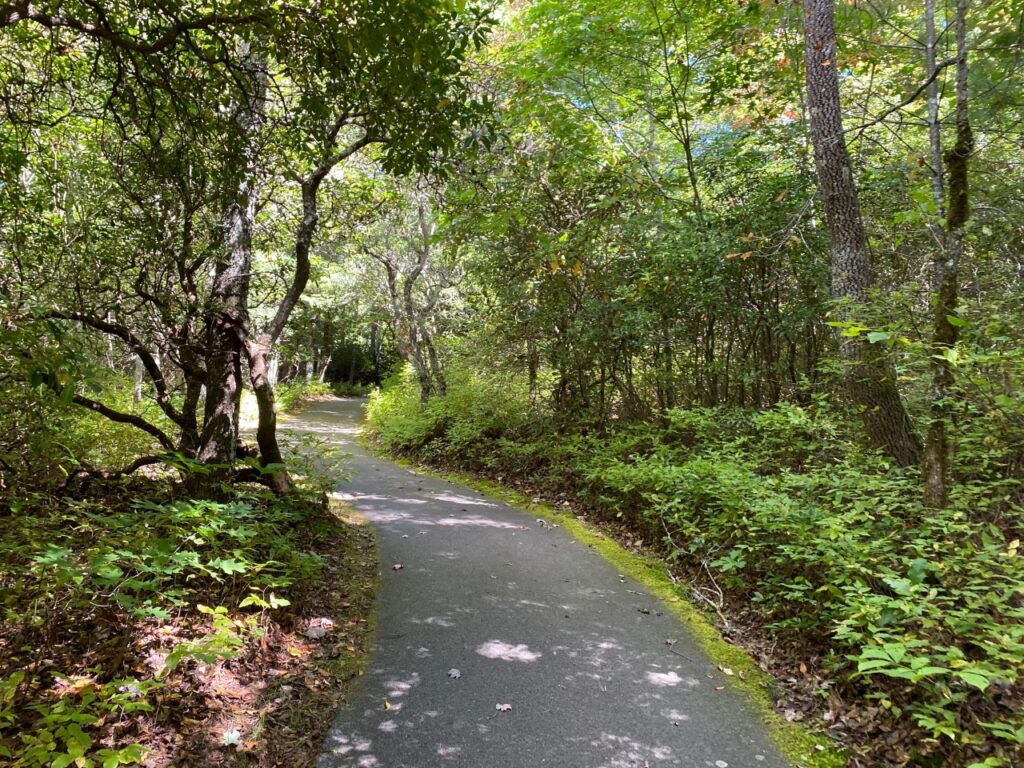
What’s silviculture (forestry)? It is the science of planning, managing and caring for forests. Early Americans treated the land and forests like it would last forever. Forest were cut down while land was burned and worn down by crops. No effort was made to protect the land for the long term. Our history lesson on forestry and the return of Pisgah National Forest to a thriving forest begins at the Cradle of Forestry in America. Thanks to the visions of George Vanderbilt and three people he hired the “science of forestry” is now practiced throughout the United States.
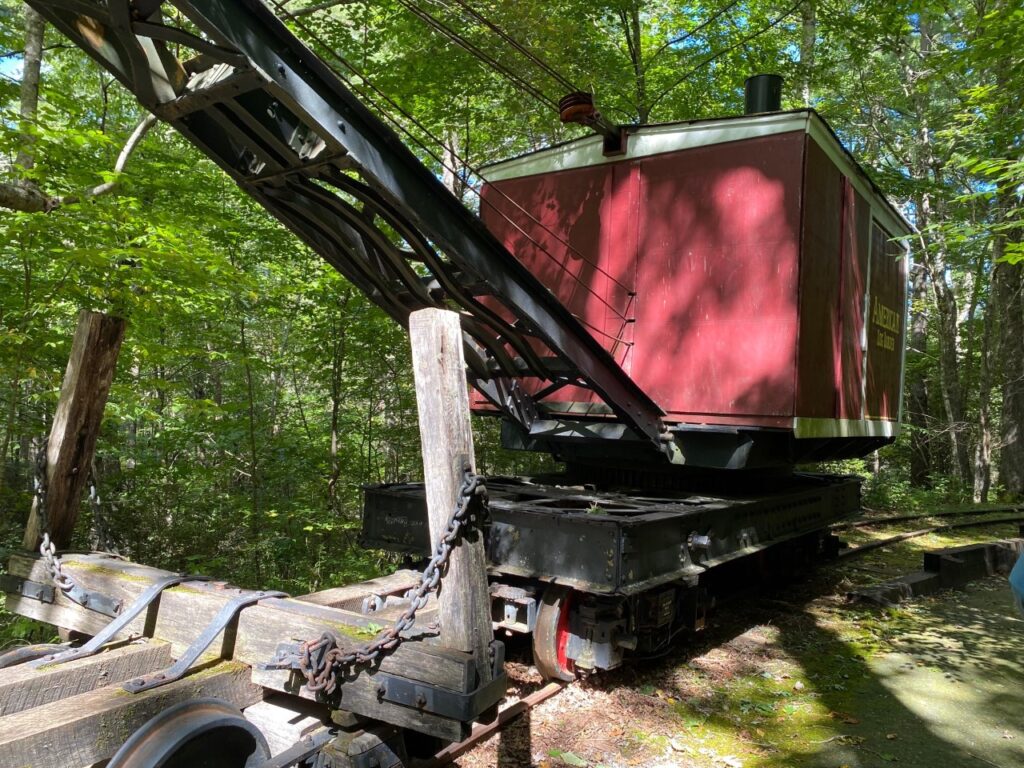
Upon arriving at the Cradle of Forestry a docent greets us. He explains the pioneering work to restore the forest at the Biltmore estate initially began with America’s foremost landscape architect, Frederick Law Olmsted. Hired to design the formal and informal gardens at the Biltmore, Olmsted saw the devastation of the Biltmore property and recognized that “forestry” was the best use of this massive estate. On Olmsted’s recommendation, Gifford Pinchot was hired. Pinchot conducted a detailed study of the estate’s woodlands, developing a long-term management plan. Three objectives of Pinchot’s plan were profitable production, annual yield of forest products, and improvement in the condition of the forest.
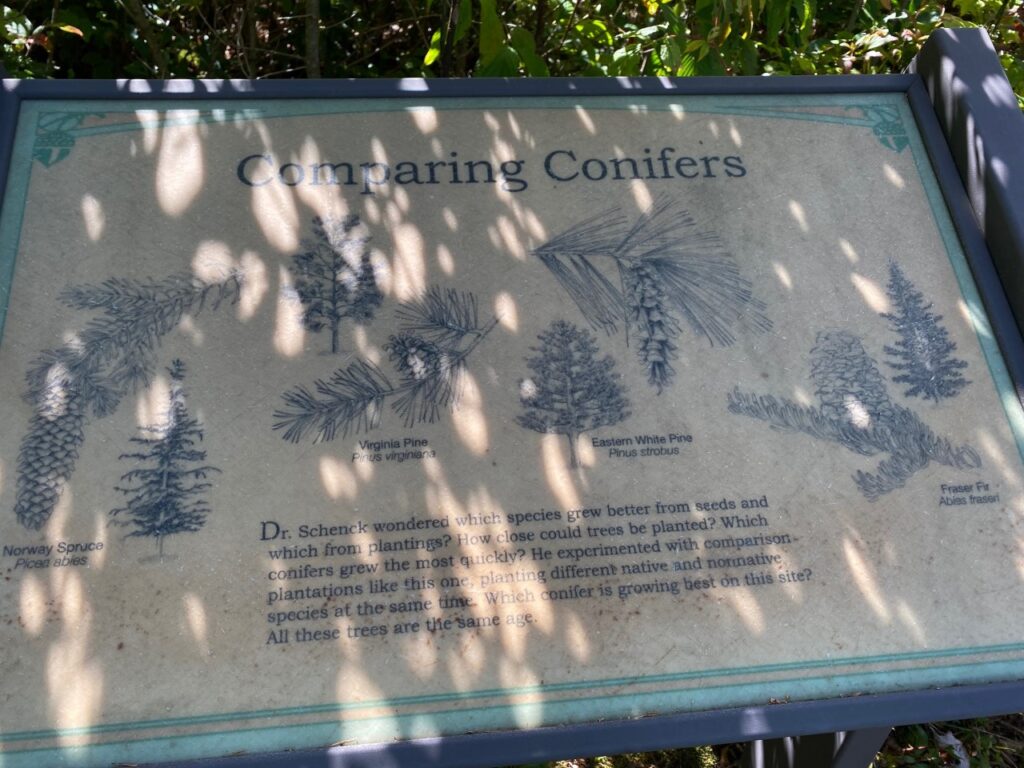
Vanderbilt then brought on Dr. Carl A. Schenck, a young forester from Germany. Schenck devised and implemented selected harvest plans, managed and improved the Biltmore Forest begun by Olmsted and Pinchot. Under Dr. Schenck, the Biltmore School of Forestry in the Pisgah Forest holdings started in 1898. It was the first of its kind in North America. George and Edith Vanderbilt are credited with creating this living legacy. Edith Vanderbilt sold 86,000 acres of the Vanderbilt’s Pisgah Forest that became the nucleus of the Pisgah National Forest. The docent shares, in addition to the museum, there are three trails to see and learn more about the Cradle of Forestry. Additionally, we can join a guided tour of Biltmore Campus Trail.
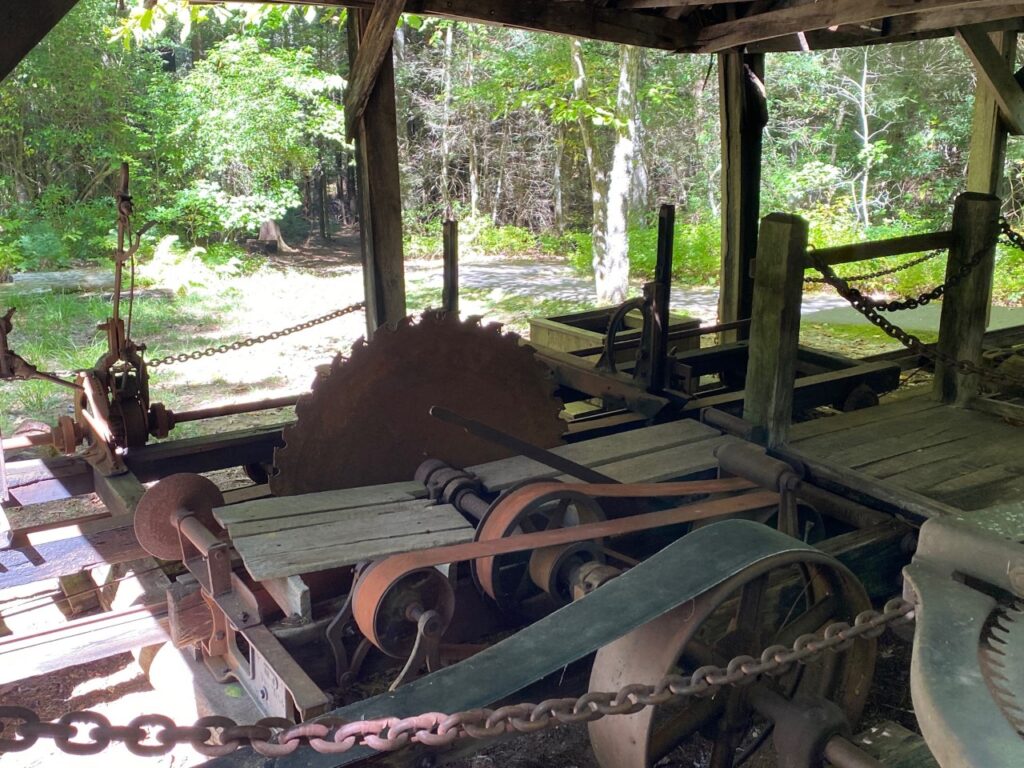
The Forest Festival Trail
Ready to explore on we set off on the 1.3 miles loop trail that educates us on Dr. Schenck’s forestry experiments. Numerous storyboards explain more on how plants grow, decomposition, forest issues, and past methods of logging. We are intrigued with Dr. Schenck’s efforts to determine whether conifers grew better from seeds or from plantings. Walking along we attempt to imagine what the forest looked like 120 years ago prior to being restored. Several pieces of equipment are found along the path. We see the antique portable sawmill. Rather than haul logs out, the portable sawmill allowed logs to be cut into boards and loaded on wagons, thus maximizing efficiency.
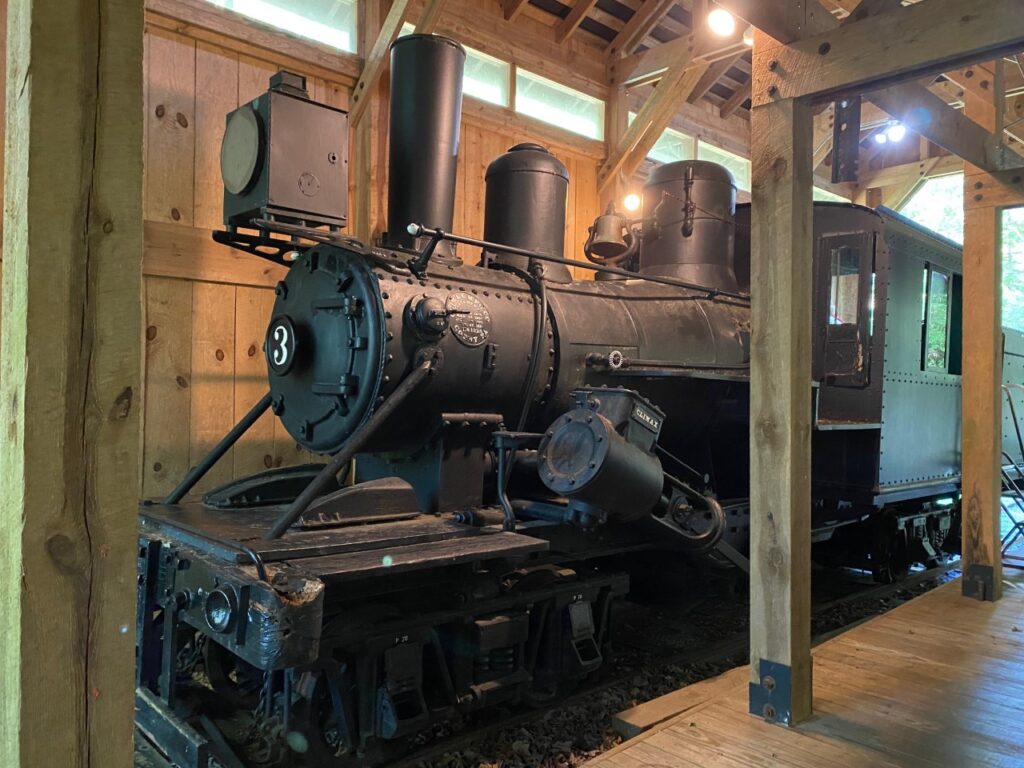
Climbing aboard the 1914 Climax locomotive, we learn about logging and the need to have railroads to move the timber out. The “Real Workhorse,” is the log loader. Its cables attach to logs then “snake” the logs through the forest to a landing near the train. Next it loaded the logs on the train log cars. Plus the trail has some fun activities for kids. The Forest Festival Trail is an enjoyable stroll while learning various aspects of forestry in Pisgah National Forest.
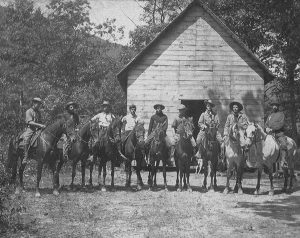
Biltmore Campus Trail
Beginning the tour of the Biltmore Campus Trail, our guide shares the history of George Vanderbilt buying the land for the Biltmore estate and the impact Frederick Olmsted, Gifford Pinchot, and Carl A. Schenck each had on restoring Pisgah Forest. The focus on the Biltmore Campus Trail is on Dr. Schenck. Sitting in the one-room schoolhouse we learn details of the life of Dr. Schenck. Born in Germany, Schenck studied forestry and received his Ph. D in forestry in Germany. On a recommendation from an influential German-born forester, he was recommended for the job in the United States working for George Vanderbilt. Dr. Schenck began working on the Biltmore estate in 1895.
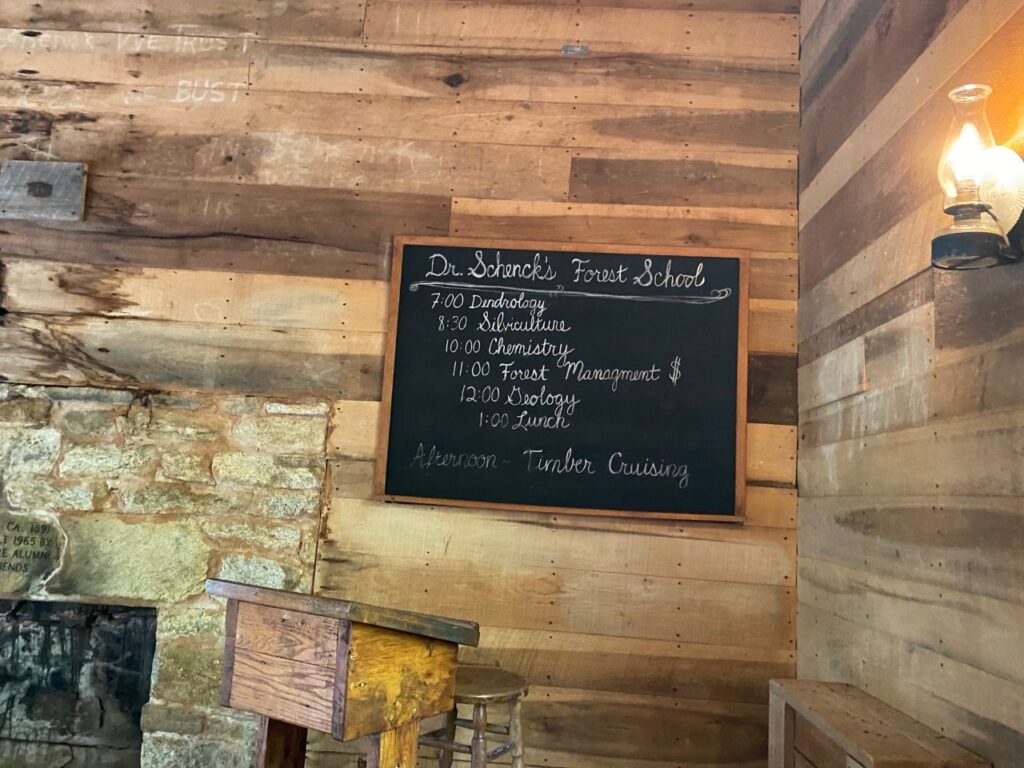
Here he continued the plans of Pinchot and started the Biltmore School of Forestry. The school continued for fifteen years educating more than 300 students. Many of the students became the first generation of American foresters. On the blackboard is Schenk’s class schedule for the day. The one-year course of study focused on traditional classroom lectures in silvicultural theory and extensive hands-own field training in forest management.
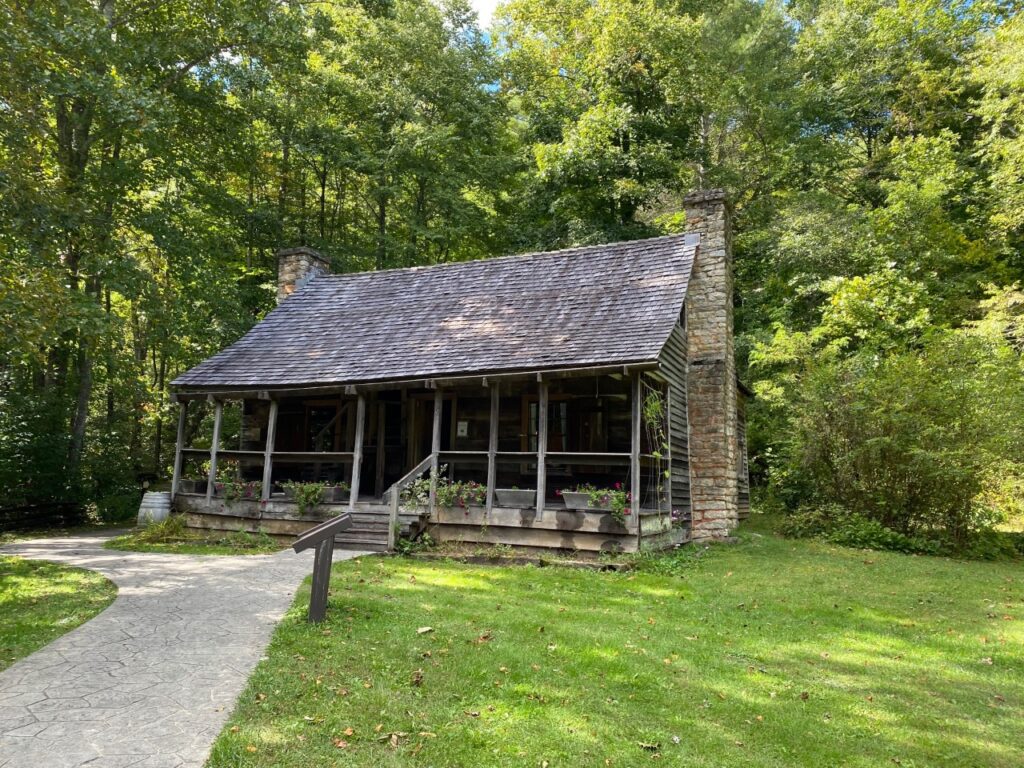
As our guide takes us through the 1.0 mile trail, she shares intriguing historical information about each building. We go inside the general store, see the cabin where Dr. Schenck and his family lived, and peek in Dr. Schenck’s office. Walking past buildings where students lived, we learn tuition was $200, but there were other expenses of Room and Board, Care of Horse, and books. Students paid for room and board but still had to find their own place to stay on the property. Usually it was an abandoned house in the forest. Every student had to have a horse. Most students bought their horse from a graduating student. Our guide gives us a very good glimpse at the lives of the first American Forestry students, as well as, the long range impact of Dr. Schenck and the Biltmore School of Forestry had on salvaging Pisgah Forest and other forests throughout the country.
Back at the main building we tour the Museum to find a lot more information regarding forestry, Dr. Schenck, and the development of Pisgah National Forest, as well as forestry science today. Visiting later in the day, we run out of time from taking the Forest Discovery Trail and really exploring more of the museum.
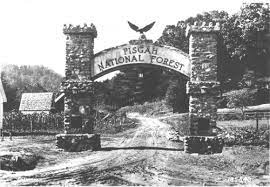
Our visit to the Cradle of Forestry is truly a fascinating education on the beginning of forestry in America. We are now so much more appreciative of the Pisgah National Forest and other National Forests, as well as, an having an admiration for the men with the vision to salvage and restore America’s forest. A huge thank you to George and Edith Vanderbilt for their contribution to saving our forests.
An excerpt from a letter from Edith Vanderbilt shares her family’s desire in preserving the property when it was sold to the United States government:
“Mr. Vanderbilt was the first of the large forest owners in America to adopt the practice of forestry. He has conserved Pisgah Forest from the time he bought it up to his death, a period of nearly twenty five years, under the firm conviction that every forest owner owes it to those who follow him, to hand down his forest property to them unimpaired by wasteful use.”
“I make this contribution towards the public ownership of Pisgah Forest with the earnest hope that in this way I may help to perpetuate my husband’s pioneer work in forest conservation, and to ensure the protection and use and enjoyment of Pisgah Forest as a National Forest, by the American people for all time….”
(Note there is a fee to visit the Cradle of Forestry. National Park card gets a reduced fee. It is closed Tuesday).
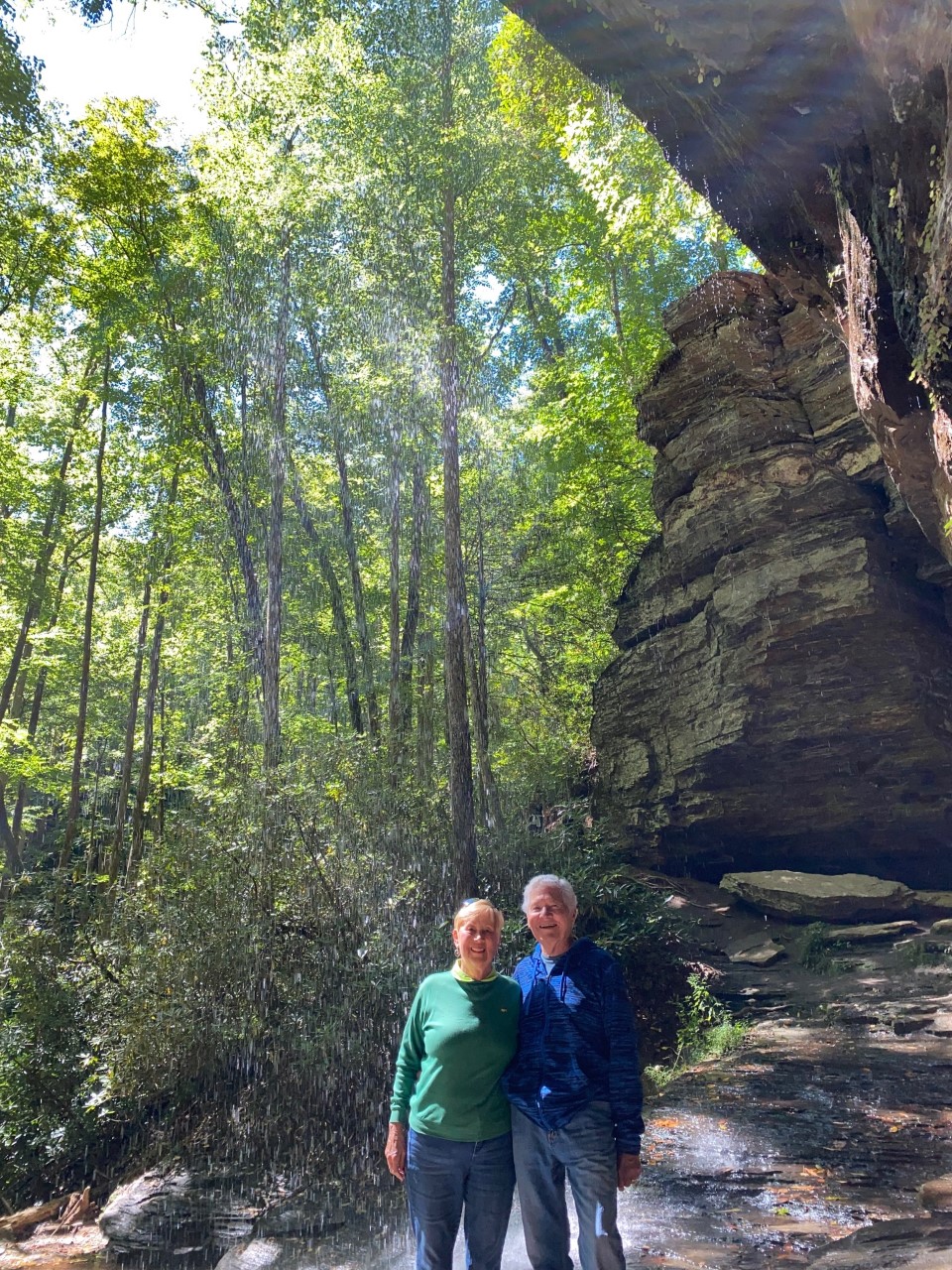
THE LAND OF WATERFALLS
Transylvania County has a most unique geography boasting 250 magnificent waterfalls. Now we are ready to see some of these romantic and thrilling cascades. Using the recommended waterfalls list from Pisgah National Park Ranger Station/Visitor Center and doing some of own research, we set off to hike and see waterfalls in Pisgah National Forest. The route we select has us mainly exploring waterfalls on or a short distance off US 276 between SR 64 and the Blue Ridge Parkway.
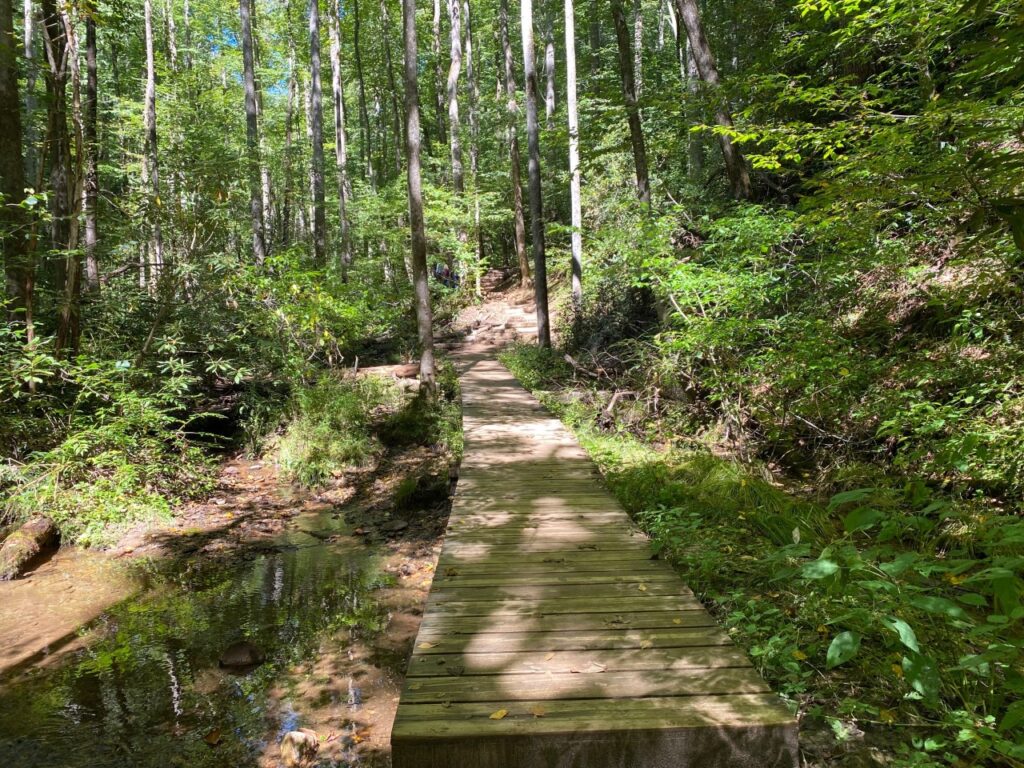
Below are pictures and insights for visiting each waterfall. These are in order we believe makes best use of time for a day of waterfall sightseeing. Taking a picnic lunch is suggested as there is no food for sale in the National Forest or the Blue Ridge Parkway. Additionally, there are only a few places with bathrooms. We highly recommend going on weekdays, as weekends can get extremely crowded and busy.
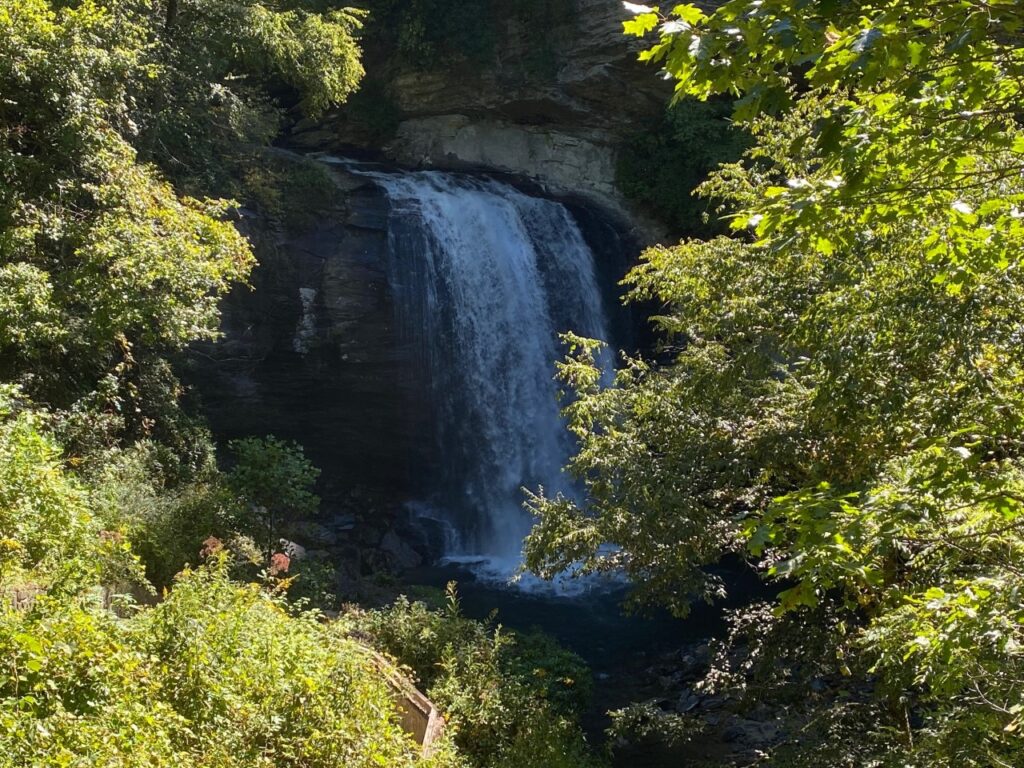
Looking Glass Falls
Going north on US 276 the falls are 4 miles from Pisgah Visitor Center. Signage and parking are on the right along the road.
Walking up to Looking Glass Falls, we hear the roar as the water cascades over a massive rock. With recent rains the Falls are very full and picturesque but a hidden some by lush foliage. The observation deck offers great photo opportunity for seeing Looking Glass Falls. Due to Tropical Storm Fred in August, the stairs leading to the pool at the base of the falls are closed. There is a lot of debris around the steps to the base. Looking Glass Falls is the easiest waterfall to see in the Pisgah National Forest as it sits next to the road. It is also one of the largest cascades in this area.
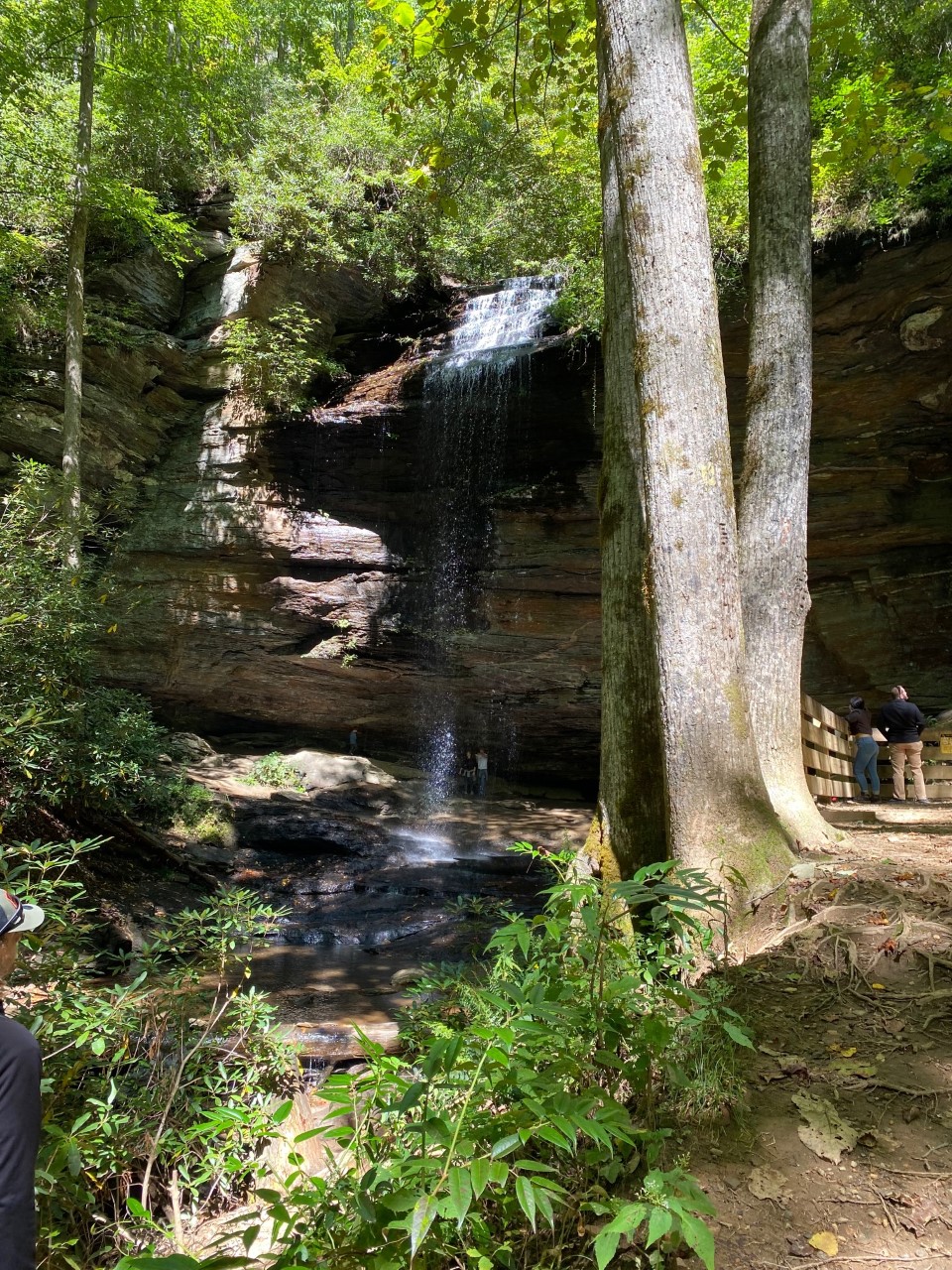
Moore Cove Falls
From Looking Glass Falls continue north 1 mile on US 276. Pull-off parking is on right side of the road, after very large left switchback.
It is a .7 mile hike to Moore Cove Falls from the parking area. The trail starts out fairly steep with steps cut into the hillside. It winds through the forest with some areas being a boardwalk along the forest floor. Taking our time we appreciate the beauty of this second-growth forest. At Moore Cove Falls we admire the beauty of this grotto falls. A platform gives a good overlook of Moore Cove Falls. With water cascading from a huge rock formation above, we delight in the grotto behind the falls.
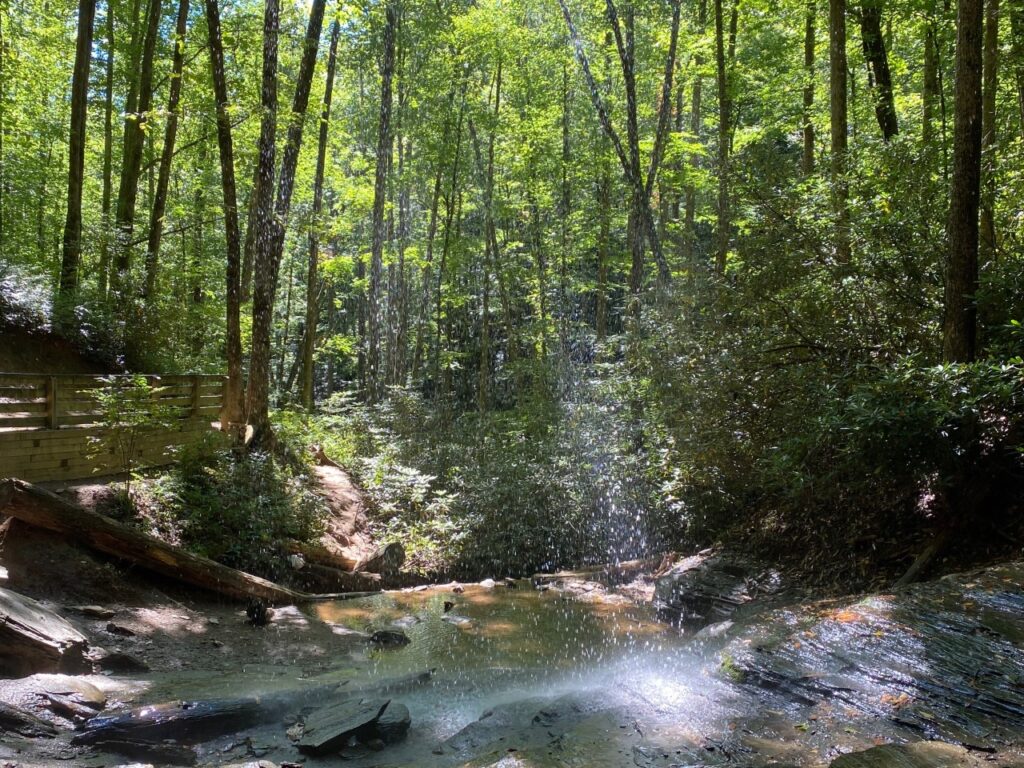
Taking the “unofficial” path to we carefully walk into into the grotto. Cool and fun to be looking our from behind this waterfall. The grotto is very large and high. Since the waterfall is not a massive cascade it is difficult to get pictures that capture the waterfall from inside the grotto. It is still thrilling to be behind the waterfall. Plus, we enjoy the winding trail on our return.
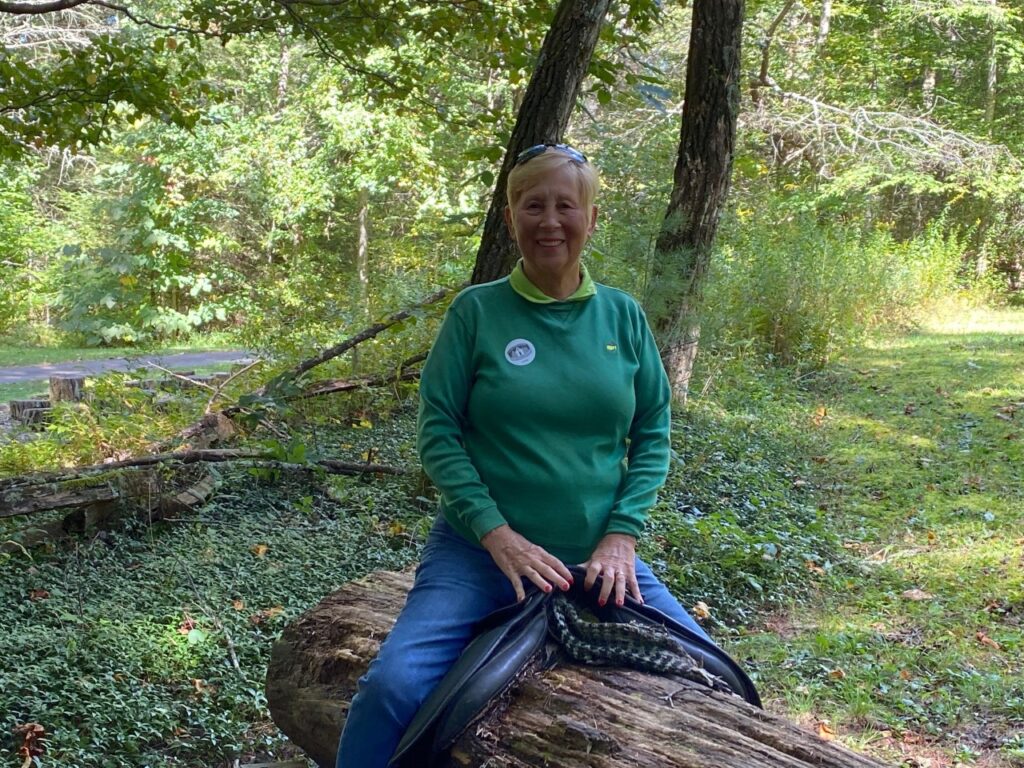
Cradle of Forestry
Continue north of US 276 4.7 miles. Entrance is on the right. There is a fee.
After Moore Cove Falls the Cradle of Forestry is another fantastic place to visit. As shared earlier in this article there is a lot do and learn about the history of forestry and Pisgah Forest. We recommend at least 2 hours or more to really appreciate and enjoy the Cradle of Forestry. Just be sure to plan ample time for a visit or opt to go on a separate visit to the Cradle of Forestry.
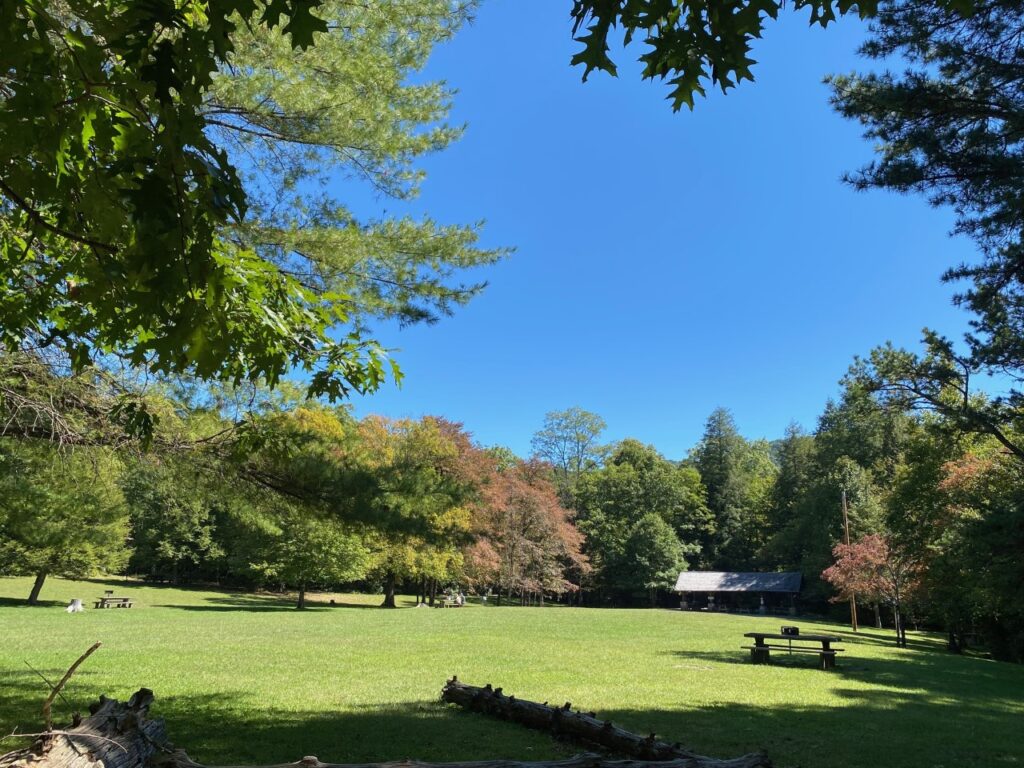
Pink Beds Picnic Area
Continue north .5 miles on US 276 from Cradle of Forestry.
On our visit we stopped at Pink Beds for a nice picnic. The Pink Beds Valley was originally named by settlers in the area. After clearing the land the area had an abundance of blooms of rhododendron and mountain laurel that was visible from the mountainsides. Today with the reforestation it is mainly the green of trees of the second-growth forest. It has several picnic tables. Plus there are bathrooms, which are few and far between when visiting a National Forest. For those who have time and like longer hikes there is a five-mile loop with little elevation change through the Pink Beds.
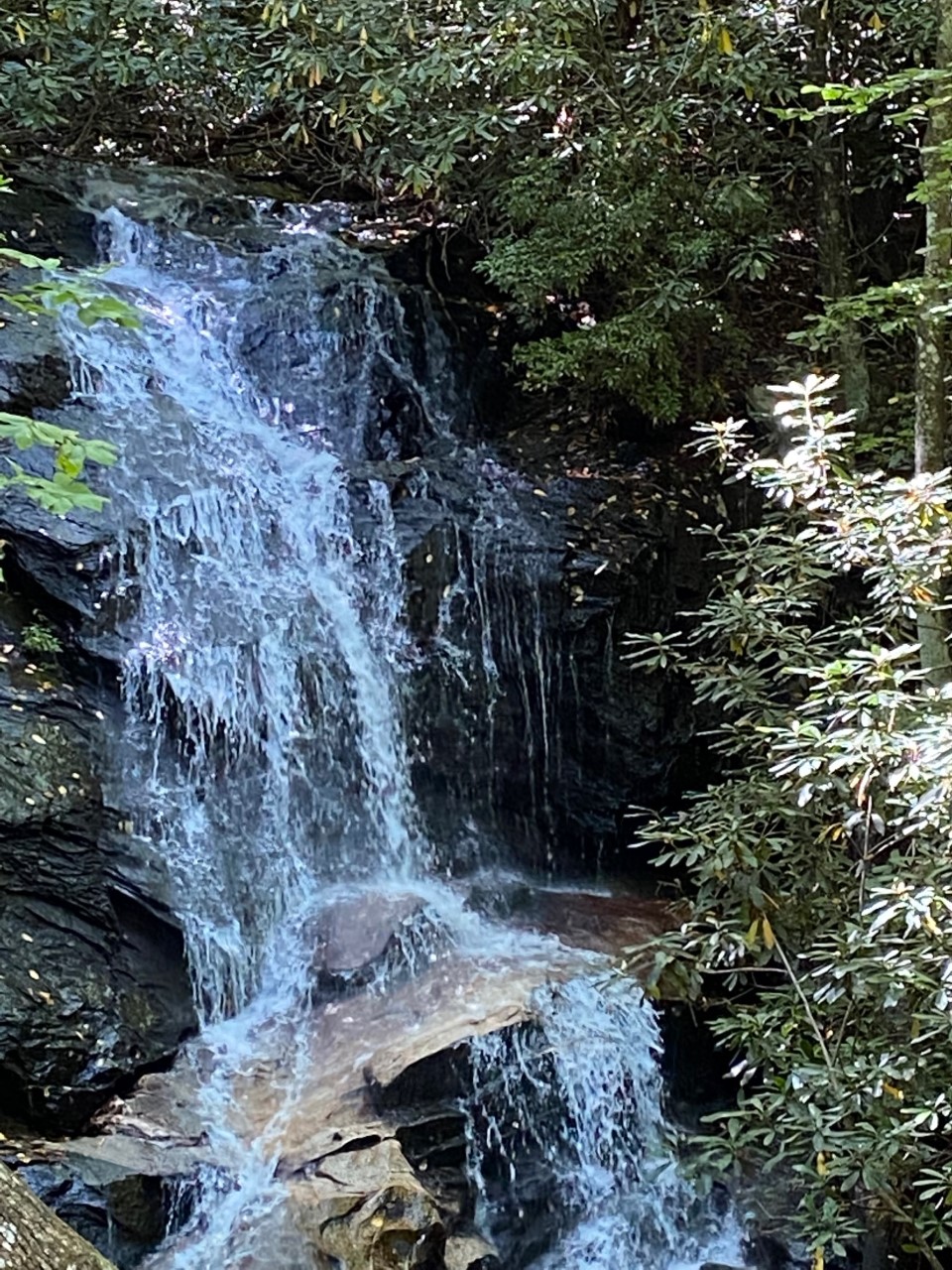
Log Hollow Falls
Heading south on US 276 from the Cradle of Forestry spot FS475B on the right side of the road. It is where US 276 has a huge left curve and FS475B is basically straight. It is a gravel road. Travel 1.6 miles to a gate that blocks a trail on the right side. Do not block the gate.
Driving to FS475B is a bit tedious so be sure to pay attention to mileage to locate the gate for the trail to Log Hollow Falls. There is no signage. The trail is an old grassed over logging road called Seniard Ridge. It’s only a half-mile hike to Log Hollow Falls. Being an old logging road, it is a relaxing hike along this wide trail. The Falls are easily seen just after the second bridge. It is a scenic waterfall that cascades a bit over a jumble of rocks. It’s fun climbing carefully along the edge of the falls where it drops into a small pond.
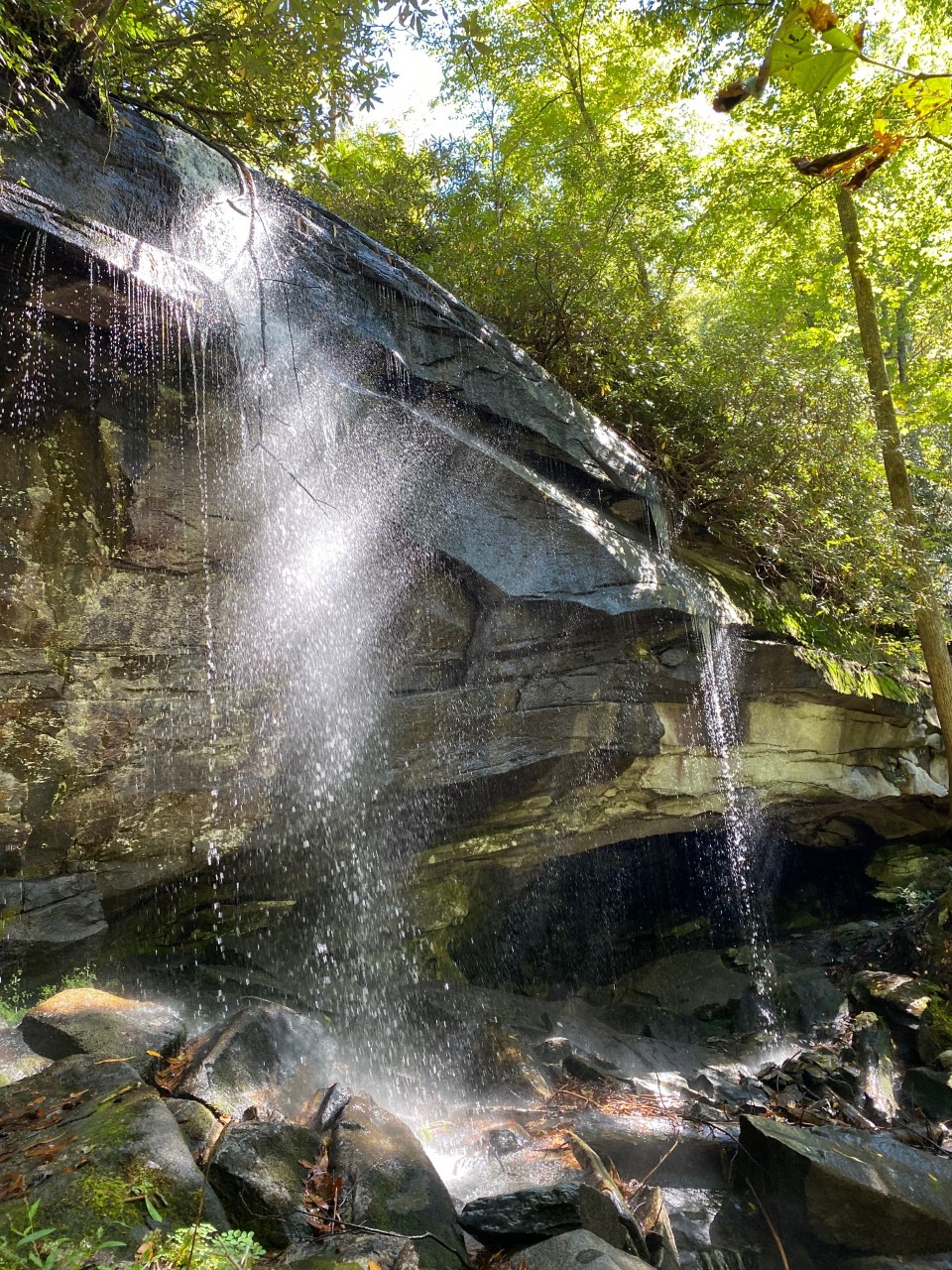
Slick Rock Falls
From Log Hollow Falls gate return to US276 and drive south to FS475. Bear right onto FS 475 for 1.5 miles (it is a paved road). Turn Right on FS 475B go 1.1 miles to small parking area on the right. The falls are blocked by trees. (Note: You can go on FS 475B from Log Hollow Falls but it is a tedious one lane road that takes a LONG time to go a few miles. Thus we recommend returning to US276 as explained above.)
We selected Slick Rock Falls from a brochure that included waterfalls in Transylvania County. It is a bit difficult to see Slick Rock Falls from the road. There is a sign and short trail to better view the falls. Slick Rock Falls are a very nice cascades across a rock formation with a small cove behind. I carefully step behind the Falls for a picture and enjoyed the drip of the cool water. The rocks are “slippery” befitting the name Slick Rock Falls.
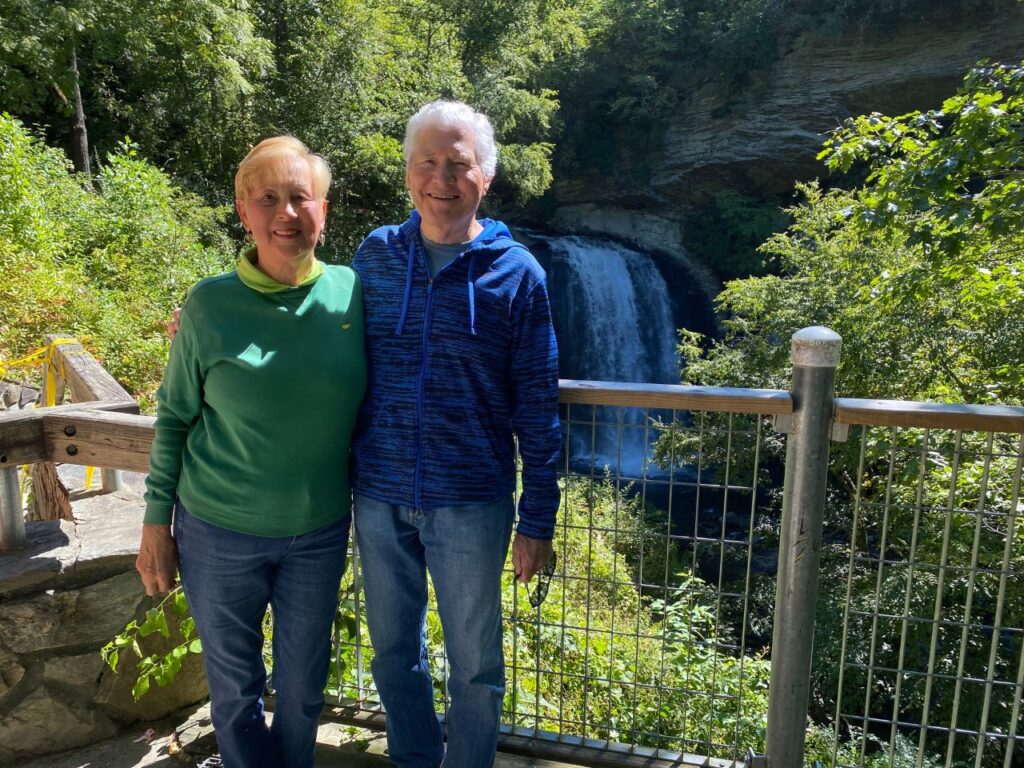
The Land of Waterfalls & Pisgah National Forest
Transylvania County and Pisgah National Forest offer plenty of activities and excitement for visitors. While our focus on this visit to Pisgah National Forest was on waterfalls and learning the history of Pisgah Forest, visitors will find plenty of outdoor adventures. Earlier this year we also explored the Maggie Valley/Waynesville area, where we did several hikes on the Blue Ridge Parkway from Waterrock Knob to Graveyard fields, as well as, Craggy Gardens near Asheville. We even played a couple of rounds of exciting mountain golf on our visits to Maggie Valley and Brevard. Now we have an even better appreciation for Pisgah National Forest and the Blue Ridge Parkway that is being preserved for us and future generations. We admire Vanderbilt, Olmsted and Schenck, who had the vision to begin “forestry” in Pisgah Forest creating, salvaging and preserving the forest for future generations to enjoy.

